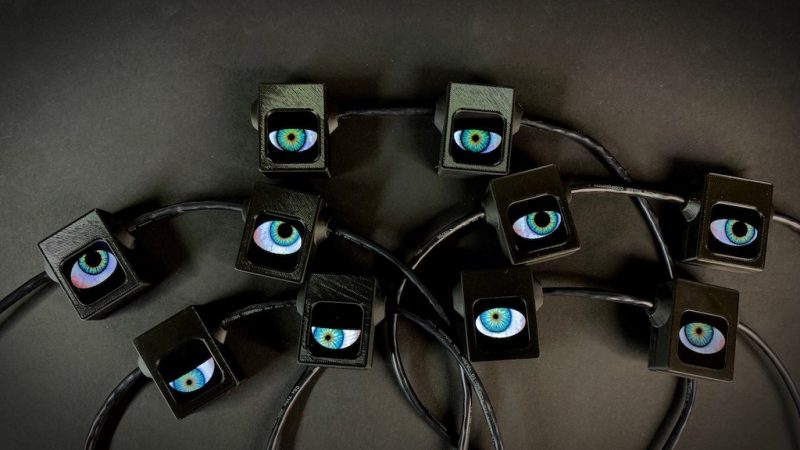Unless you have an incredibly well-stocked parts bin, it’s probably too late to build these spooky animated eyes to scare off the neighborhood kiddies this year. But next year…
It’s pretty clear that Halloween decorating has gone over the top recently. It may not be as extreme as some Christmas displays, but plenty of folks like to up the scare-factor, and [wermy] seems to number himself among those with the spirit of the season. Like Christmas lights, these eyes are deployed as a string, but rather than just blink lights, they blink creepy eyes from various kinds of creatures. The eyes are displayed on individual backlit TFT-LCD displays housed in 3D-printed enclosures. Two pairs of eyes can be driven by the SPI interface of one ItsyBitsy M0 Express; driving more displays works, but the frame rate drops to an unacceptable level if you stretch it too far. Strung together on scraps of black ethernet cable, the peepers can live in the shrubs next to the front door or lining the walk, and with surprisingly modest power needs, you’ll get a full night of frights from a USB battery bank.
We like the look of these, and maybe we’ll do something about it next year. If you’re still in the mood to scare and don’t have the time for animated eyes this year, try these simple Arduino blinky eyes for a quick hit.
Thanks to [baldpower] for the treat. No tricks.
















Those ‘red board’ ILI9341 displays are great. A lot of the larger 240×320-pixel ones have a separate SPI bus broken out for both an SD card slot on the back, and an unpopulated SOIC8 footprint that seems to fit common RAM and Flash chips like a 23LCxxx or W25xxx.
The backlight pins on the displays are also just like normal LED connections, so personally I like to control the display brightness with PWM; a transistor costs a little more than a resistor, but if you have an extra GPIO pin it’s usually worth it for some extra battery life and runtime brightness control.
The ‘snap-case’ enclosure tutorial they link to also looks very useful.
This is a really clean and tastefully-made build. It’s like one of those strings of incandescent Edison bulbs that restaurants use to light up their outdoor dining area, but instead of bulbs it’s TFT displays. You could do all sorts of neat exhibits with this.
I wonder if you could train a image recognition camera to map the relative location of each display, track a person walking around the room, and do the necessary math to make all the eyes follow you as you walk around.
Yeah, I thought of the tracking eyes when watching the video!
I think there’s a tutorial over at Adafruit that does exactly that. Or controls the eye gaze with a tiny joystick.
Full metal alchemist
Neat. I really like it.
This is fun. I was thinking of putting this in the house and have it detect when lights are on then turn off thus hiding from people trying to find them.
You should sell the string for outdoor Halloween decorations on Etsy or eBay! I’d buy several!
Yes I would buy them as well